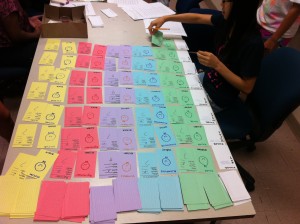Teen Angst, Part 1
I jokingly described the last game our team was struggling with as a helicopter going down in flames. Fortunately, that game is now in good shape and we are heading toward play testing. However, with only two weeks left in the program, there is still one last game to develop for the high school students. … Continue Reading ››




You must be logged in to post a comment.